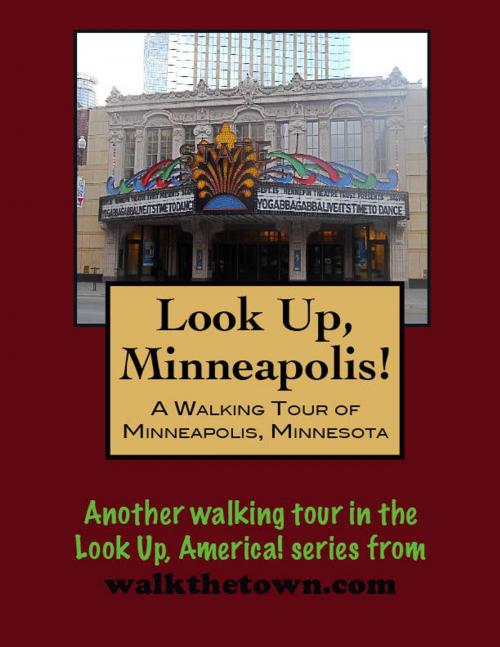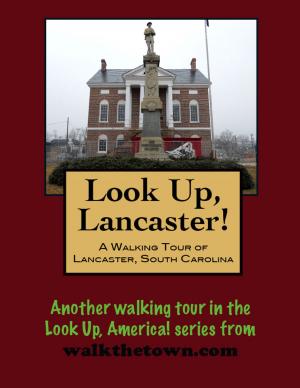Look Up, Minneapolis! A Walking Tour of Minneapolis, Minnesota
Nonfiction, Travel, United States, History, Americas| Author: | Doug Gelbert | ISBN: | 9781465733108 |
| Publisher: | Doug Gelbert | Publication: | September 2, 2011 |
| Imprint: | Smashwords Edition | Language: | English |
| Author: | Doug Gelbert |
| ISBN: | 9781465733108 |
| Publisher: | Doug Gelbert |
| Publication: | September 2, 2011 |
| Imprint: | Smashwords Edition |
| Language: | English |
There is no better way to see America than on foot. And there is no better way to appreciate what you are looking at than with a walking tour. Whether you are preparing for a road trip or just out to look at your own town in a new way, a downloadable walking tour is ready to explore when you are.
Each walking tour describes historical and architectural landmarks and provides pictures to help out when those pesky street addresses are missing. Every tour also includes a quick primer on identifying architectural styles seen on American streets.
Sawmilling was the number one industry in Minnesota in 1867 when Minneapolis was incorporated as a city but John Pillsbury, who had settled in St. Anthony's Falls in 1853, believed the new reaper invented by Cyrus McCormick would make flour milling the new big business. Pillsbury persuaded his nephew Charles Alfred Pillsbury to bring his new bride to join him in milling flour. Their first venture was a broken-down 250-barrel Minneapolis flour mill that the Minneapolis business community considered a risky investment, at best. After all, in the heart of "America's Bread Basket," Minnesota was actually importing flour at the time. Minnesota wheat was hard, brittle and produced inferior flour. It cost more to make and sold for less than other Midwest flours. Not a winning combination.
The Dartmouth-educated Charles Pillsbury, however, saw potential in the unpopular grain. He believed he could actually make superior flour from the gluten-rich kernels. He installed a new purifier that blew the bran out of the wheat kernel and made a $6000 profit in his first year. Charles took the profits and started a new firm, C.A. Pillsbury & Co., in 1872 and by 1880 he was operating the largest flour mill on earth. Minneapolis was about to become the flour capital of the world.
For the next 50 years Minneapolis boomed, building up and out to handle the needs of a population that grew from 13,000 to more than 450,000 in those years. But the city was just as eager to tear down as it had been to build up. An eager participant in urban renewal, the city demolished some 200 buildings in the 1950s and 1960s, clearing away about half of downtown.
Our walking tour of downtown Minneapolis will sift among the newish towers and find the landmarks still standing. Along the way we will see more statues dedicated to made up fictional characters than those honoring real people and we will start with characters from America's most popular comic strip...
There is no better way to see America than on foot. And there is no better way to appreciate what you are looking at than with a walking tour. Whether you are preparing for a road trip or just out to look at your own town in a new way, a downloadable walking tour is ready to explore when you are.
Each walking tour describes historical and architectural landmarks and provides pictures to help out when those pesky street addresses are missing. Every tour also includes a quick primer on identifying architectural styles seen on American streets.
Sawmilling was the number one industry in Minnesota in 1867 when Minneapolis was incorporated as a city but John Pillsbury, who had settled in St. Anthony's Falls in 1853, believed the new reaper invented by Cyrus McCormick would make flour milling the new big business. Pillsbury persuaded his nephew Charles Alfred Pillsbury to bring his new bride to join him in milling flour. Their first venture was a broken-down 250-barrel Minneapolis flour mill that the Minneapolis business community considered a risky investment, at best. After all, in the heart of "America's Bread Basket," Minnesota was actually importing flour at the time. Minnesota wheat was hard, brittle and produced inferior flour. It cost more to make and sold for less than other Midwest flours. Not a winning combination.
The Dartmouth-educated Charles Pillsbury, however, saw potential in the unpopular grain. He believed he could actually make superior flour from the gluten-rich kernels. He installed a new purifier that blew the bran out of the wheat kernel and made a $6000 profit in his first year. Charles took the profits and started a new firm, C.A. Pillsbury & Co., in 1872 and by 1880 he was operating the largest flour mill on earth. Minneapolis was about to become the flour capital of the world.
For the next 50 years Minneapolis boomed, building up and out to handle the needs of a population that grew from 13,000 to more than 450,000 in those years. But the city was just as eager to tear down as it had been to build up. An eager participant in urban renewal, the city demolished some 200 buildings in the 1950s and 1960s, clearing away about half of downtown.
Our walking tour of downtown Minneapolis will sift among the newish towers and find the landmarks still standing. Along the way we will see more statues dedicated to made up fictional characters than those honoring real people and we will start with characters from America's most popular comic strip...















